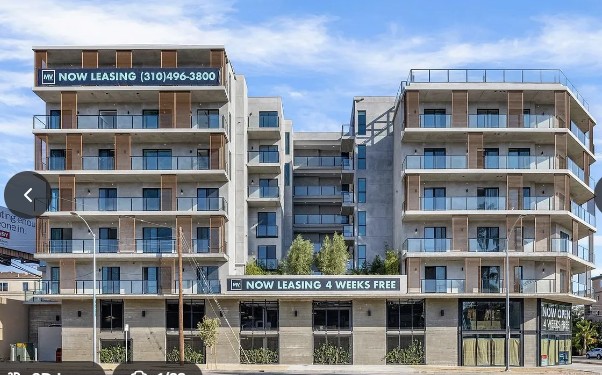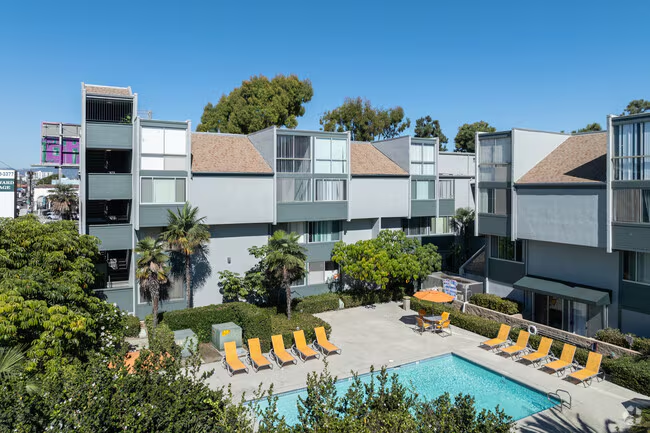One can’t listen to a radio or television program or pick up a newspaper without the dire warnings that California is facing a severe housing shortage. People such as your editor repeated this mantra, without thinking. Who would lie about housing? After the Palisades and Eaton Fires, it was estimated that at least 150,000 residents had to find a place to stay in Southern California.
People stayed with relatives, friends, motels, but surprisingly, there was a large number of apartments available in Santa Monica, Marina del Ray, Playa Vista, Venice and Culver City. There was no housing shortage.
For most people, an apartment was found almost immediately, harder to rent was single-family home with a yard.
Sacramento and particularly, Senator Scott Weiner and cohorts, push bills like SB 79, which would allow duplexes on single family homes because of the “lack of housing.”
There is no lack of housing, even for the homeless. Westside Current Editor Jamie Paige and writer Chris LeGras discovered in a May 2024 story click here. that an investigation “has uncovered more than 1,200 vacant City-owned high end apartments and motel and hotel rooms in two dozen Homekey buildings that are supposed to be providing interim or permanent supportive housing to homeless people in LA. At least five buildings have never been occupied. The properties range from low-end motels to luxury apartments HACLA (Housing Authority of the City of Los Angeles) acquired from for-profit developers, in many cases for record-breaking prices.”
POPULATION SHIFT:
The Wall Street Journal in an August 16 Opinion (“The Real House Democratic Nightmare”) reported that between 2020 and 2024, California lost 1,465,116 people to Red States and those under the age of 18 in this state shrank by 523,000.
One might argue that immigrants to this state, could potentially fill the apartments, but the WSJ noted “Only about one third of immigrants who came to California between 2010 and 2023 on net, stayed.”
Following the 2020 Census, done every 10 years, California lost a congressional seat from 53 to 52, because it lost population. Cal Matters wrote in April 2021 story (“California Loses Congressional Seat for First Time”), “Not only does that mean the state will have one fewer representative in the House, it also means one fewer vote in the Electoral College that decides the presidency and proportionately less of the $1.5 trillion in federal money distributed by population each year.
The WSJ noted in the predictions for 2030 that “The left-leaning Brennan Center estimated in December that Texas and Florida would each gain four House seats, while Utah, Idaho, North Carolina and Arizona would add each one. California would lose four . . ..”
The state is losing people, but still the California State Legislature continues to try to “pop out” one massive housing bill after another. SB 79 is the most recent example.
WHY THE HOUSING PREOCCUPATION?
Money of course. There are federal and state tax breaks. Developers make money, developers pay lobbyists, and the Sacramento Merry-go-Round continues to spin.
The California Tax Credit Allocation Committee (CTCAC) facilitates the investment of private capital into the development of affordable rental housing for low-income Californians. CTCAC allocates federal and state tax credits to the developers of these projects. Corporations provide equity to build the projects in return for the tax credits.
Kate Talerico of the Bay Area News Group in January 2025 reported click here “According to California Housing Partnership, developers who have reaped millions of dollars from an affordable housing program for middle-income renters with sometimes little-to-no discounts from market rents have spent hundreds of thousands on lobbying and campaign donations in recent years in a bid to keep lawmakers from imposing regulations.
“The expenditures represent a fraction of the $32 million the California real estate industry as a whole spent on lobbying the state legislature and the executive branch in the past three years. But they helped the industry stop a bill seen as a threat to their business model, in which state-established finance authorities issue bonds to buy property to turn into income-restricted housing, and private developers collect fees from brokering the deals. Because they’re owned by a public agency, the buildings are exempt from property taxes, the savings from which are, theoretically, used to set rents at lower levels.”
According to the Bipartisan Policy Center, a federal program LIHTC (Low-Income Housing Tax Credit), established in 1987, “provides the Internal Revenue Service (IRS) with the authority to issue tax credits to each state based on its population size, with a minimum for states with small populations. States receive a fixed number of tax credits annually, which state housing finance agencies (HFAs) then allocate to developers through a competitive process. Developers sell these credits to investors who, in turn, use them to offset their federal income taxes, raising capital for affordable housing properties.”
According to the Tax Policy Center, “While the LIHTC program may help construct new affordable housing, maintaining that affordability is challenging once the required compliance periods are over.” click here
The bottom line, Southern California has a declining population, numerous apartments saturating the market and developers continue to make money on “low-income” housing.




My brother has been homeless for two years and has never been able to get into one of these supposed special housing for the homeless. What’s the process?
Note that it is State Senator Scott Weiner, not Mark Weiner.
The housing USE crisis, misrepresented as a lack of housing units, is central to Los Angeles losing its way as a city that enforces existing laws and responds nimbly to new technology and legislation that causes harm to neighborhoods.
C.C. de Vere has been scouring public records to map the vast scope of L.A.’s empty buildings and unpermitted Airbnb violations, and her work and additional links can be found on the Los Angeles Preserved subreddit wiki: https://www.reddit.com/r/LosAngelesPreserved/wiki/index/
If any Palisadeans encounter empty buildings in their housing search, please share the information with C.C. (emptylosangeles@gmail.com) so it can be added to the map.
Phil,
Thanks, changing it now.
Sue
When someone who doesn’t understand economics says, “there is a shortage of xxx”, what they really mean, but don’t have the comprehension to state, is “the equilibrium price of xxx is higher than I want it to be”. Housing is expensive, of course, in Southern California because of historically limited supply and very strong demand. That means prices are high. But there is no “shortage”.
The key point is there is a lack of AFFORDABLE housing. That is the problem. The debts are ridiculous.
There are tons of vacancies in DTLA, which has a 17-20% vacancy rate currently. FACT, not fiction. Housing crisis is used for a myriad of bills, changes to policy, etc etc that many times aren’t necessary, benefitting the lawmakers & developers more than the peoploe affected by “housing crisis”
If you have ever built a home or multi family structure you’d understand the fees and bureaucratic hoops add 1/4 to 1/3 the cost of construction
I do some outreach work for the chronic homeless. One of the big problems for California is that we have 25% of the homeless on the streets. It’s because they can survive outside here year around. Also there is the “California dreaming” push for those not making it in their own state to come here for the higher wages.
After talking to people living in one of the largest areas in town where they congregate for services, I discovered that the very large majority of the people, at least in the fall when I did an informal survey, were from other states. These were not people with great jobs and skills, but those that were struggling in their home state.
I talked to young mothers with not even a high school education who had a couple of children in tow. There were also lots of young families with a father that made minimum wages in other states that came here for a new start. But they cannot make it here with only one parent working because of the cost of housing. So they sign up for subsidized housing.
Then the lists get long and anyone with lower income who already lives here is at risk of becoming homeless if they somehow lose the place they are staying.
The whole thing is unsustainable for California. We pay our taxes to have a better life here and states that don’t want taxes or entitlement programs are happy to have their citizens move here. Federal rules make it impossible to deny them housing or give locals first preference. It is unsustainable and no matter how much money is thrown at the problem, it will continue to increase.